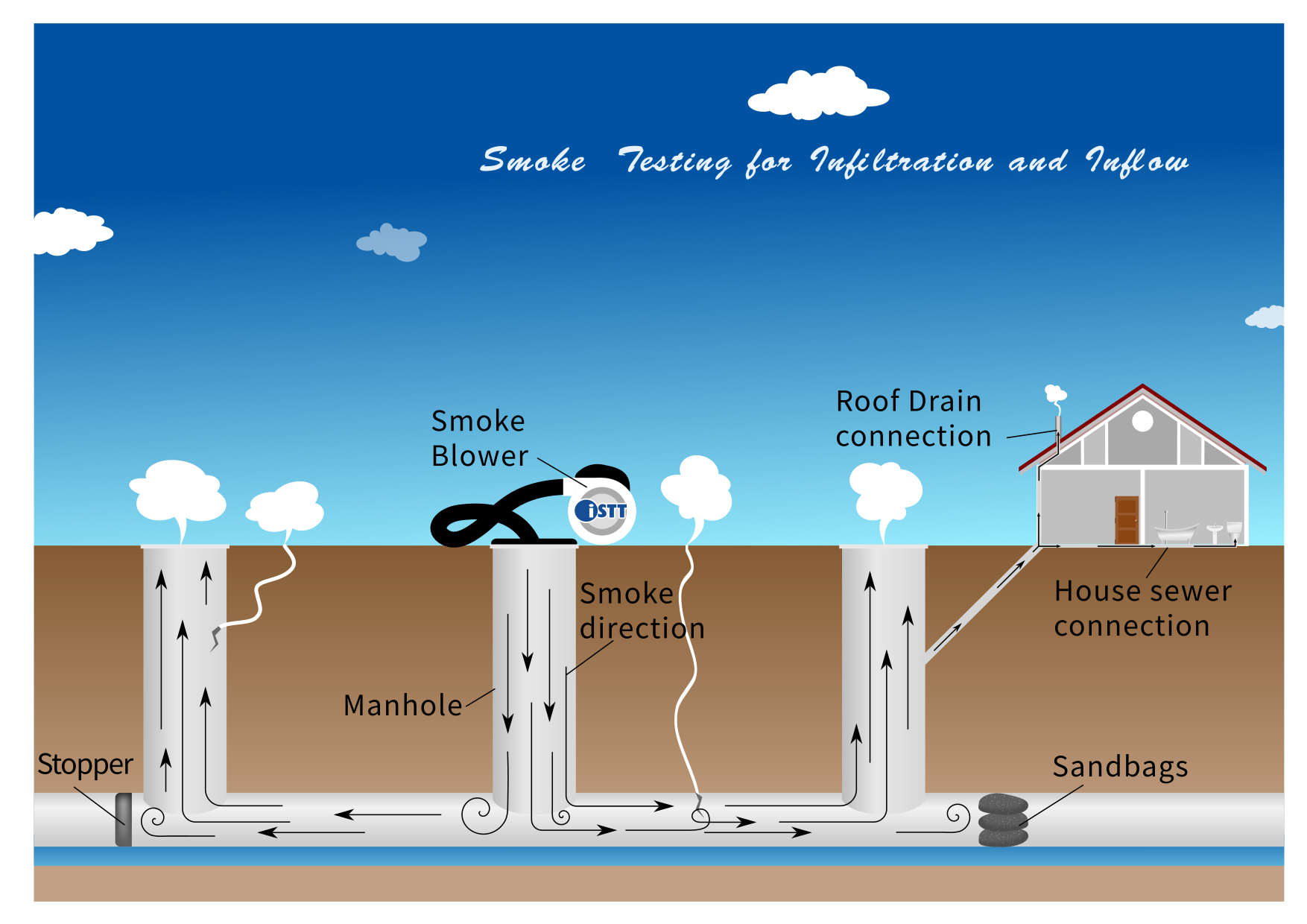- Infiltration / Inflow (Gravity Pipes)
-
Infiltration/ Inflow (I/I) can be defined as the process by which storm water or ground water enters into the sanitary sewer system. Infiltration is considered the groundwater that enters the system through its contact with the ground. Inflow is considered stormwater flow that enters the system through illegal or wrong connections or by direct access of surface water into the system. During a storm, the system flow response to inflow will tend to be much quicker than to infiltration. The sewer system is designed with an estimated flow capacity that it can carry. I/I can cause overloading of the sewer system, consequently causing backups, and overflow during heavy rain. I/I can also erode the supporting soil surrounding a buried pipe leading to deformation and collapse. Information on the presence of I/I in a system and specific locations where it is occurring can be gathered by a variety of methods. System flow information relative to rainfall events or reports of overflows/backups provide evidence of I/I problems and their severity in a sewer system. The excess storm or ground water also can influence the chemical/biological quality of flow within the system and affect treatment processes at the waste water treatment plant. Dye testing can be used to determine if surcharge in a drainage system area is in fact sewage effluent. Dye testing is also used to trace the flow of water through pipes and sewers. Smoke testing can be done to help determine if there is a broken or separated pipe, and it can also determine the location of leaks. Narrowing down the areas of most severe I/I can be done by monitoring flows in specific sewer basins and by charting overflows and backups. The individual sources of I/I leakage are typically identified through in-pipe camera observation.

The International Society for Trenchless Technology
 Cart
Cart
